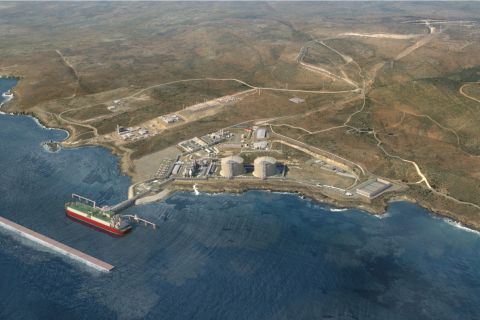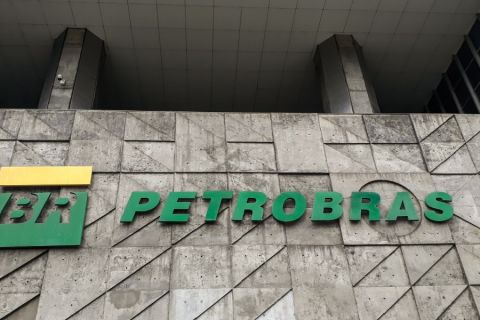Mud programs originated primarily as an inventory management tool prior to the
late 1940s, when drilling fluids companies’ distribution arms were managed by a network of independent dealers — often local lumber companies or similar businesses that had warehouse space, trucks and equipment capable of handling the bulky products. Mud programs were prepared as a means of projecting product consumption, thus ensuring that enough barite, gel and other early products would be on hand.
As the drilling fluids industry grew and fluids systems became more chemically and physically complex, fluid companies gradually hired and trained sales engineering staffs. “Mud engineers” began to serve as the primary fluids company contact. They began to offer wellsite recommendations regarding fluid products, mud systems and specialized applications for both systems and individual products. They also assumed the responsibility for ordering products for the rig for both short-term and longer-term needs. Mud engineers also began to keep well records, recording daily fluid properties along with operational information at the well site.
Eventually, fluids companies accumulated extensive libraries of well recapitulations. The recaps contained valuable information for planning future wells in a given area. Of particular importance to operators’ drilling engineers were histories of fluid densities required to control often abnormally pressured zones in offset wells. This data was also used to design casing programs and quickly became indispensable to the well planning process.
Later, fluids company mud programmers began plotting offset well electric logs to more accurately predict pressure transitions, fluid density requirements and casing points in the planning process. Wellbore stability issues and associated borehole problems in given areas were also noted and considered in mud program preparation. Recommendations were incorporated into the mud program to avoid or prevent them.
Mud programs were quickly becoming more sophisticated and more valuable as an engineering and planning document. They were also becoming a valuable sales and service presentation platform. Operator requests for mud programs soon became the norm. As fluids programs became more complex, mud companies gained access to the operators’ drilling departments to discuss details of the technical recommendations and projected costs.
Modern mud programs
The planning process of the modern mud program has evolved into a detailed document built in the following steps:
• Basic well data is collected. This includes operator and well name, exact surface and bottomhole location, list of key offset wells and other pertinent offset data, proposed casing and directional programs, lithology columns and related geological data, an inventory of the rig to be used, and solids control equipment on that rig.
• A map shot of the area is made.
Key offset wells are spotted and prioritized.
• Additional data are collected after the offset wells have been prioritized. Such data may include offset electric logs, maps and completion cards, bit records, geomechanical studies, and drilling fluids recaps.
• All the data is then analyzed. The programmer looks for problems such as kick pressures, lost circulation zones, reactive formations, etc.; writes technical recommendations to address potential problems and includes best drilling fluids practices; determines which fluid type should be used in each interval; and writes technical specifications for each fluid type.
• Pore pressures are plotted and a pore pressure profile is developed. While many operator drilling engineers today will have already completed this process, mud programmers still provide this service upon request. This information is used to determine fluid density and to avoid inducing formation fractures at any point in the well bore.
After the draft mud program has been prepared, the fluid company representative will usually meet with the operator to discuss the mud programmer’s planned approach and to reach a consensus.
After the meeting, the mud programmer will then further refine the mud system recommendations by addressing items that may be non-routine and specific to the subject well. Such additional factors may include environmental requirements; hydraulic limits; contamination issues like CO2, H2S, salt and temperature; lubricity and shale stability issues; and client preferences.
The mud programmer then calculates interval fluid volume requirements based upon interval hole size, solids control efficiency and projected drilling days and prepares interval and total projected fluid cost. This cost may also include peripheral equipment such as barges, cuttings boxes, tank rentals and additional solids control equipment.
Contingency recommendations for non-routine events including stuck pipe and lost circulation are then incorporated into the mud program. Best practice recommendations for increasing penetration rates, ensuring proper hole cleaning and performing sweep procedures are also included.
A detailed hydraulic program may also be developed for the well. That program may include information for each interval with varying mud and circulating parameters to optimize fluid properties to match the various scenarios. Hydraulics modeling and fluid flow properties optimization aimed at penetration rates, cleaning of the bit face and hole cleaning is a particular focus of mud programs. The prudent and thorough mud programmer devotes special attention to these issues, thus integrating fluid recommendations to satisfy the requirements of the overall drilling prognosis.
The mud programmer may also consider compatibility of the mud system and its components with modern drilling systems in finalizing his or her document. Selected bit types and mud motors, as well as measurement-while-drilling/logging-while-drilling tools that may be used, impact fluid product selection and system application.
Likewise, modern drilling techniques often place specialized demands upon fluid performance and must be addressed in the program. Deepwater operations, where drilling fluid is subjected to a wide range of temperature and pressure environments (including the coldwater temperatures in the riser), is one example. In this case, where synthetic-based fluids are the popular choice, mud formulation should ensure a consistent flow profile through the range of elevated bottomhole temperatures and extremely cool riser temperatures. If not considered, the fluid may become too viscous, imposing undesirable pressure loss in the annulus — a common culprit in lost returns or formation ballooning.
Graphs of projected depth versus days, fluid density and cost are included in the mud program to provide a valuable tracking tool as the well progresses. Product information, warehouse capabilities and fluid company personnel contact information are also included.
The mud programming process described here is often altered depending on operator needs or experience in the area. A development drilling program may follow these guidelines initially but require only an abbreviated fluids program with detailed cost information for subsequent wells. Shallow wells may require only basic information, technical guidelines and cost projections. In some instances, cost projections may be completed before the program is written.
Mud companies (and in many cases operators) have invested considerably in proprietary software development to aid in mud program preparation, including hydraulics programming, log plotting and cost estimating. Software has also been developed to monitor well progress and actual fluid properties versus programmed values.
The finalized mud program delivered to the operator reflects the fluid company’s level of expertise, capabilities and understanding of operator goals. It may even be argued that the quality of the finalized mud program reflects the priority the company has placed upon soliciting the operator’s business.
Execution of mud program recommendations throughout the drilling process often directly affects operational success and total well cost. It also provides a means for reviewing drilling fluids system, product and company performance.
Recommended Reading
Spate of New Contracts Boosts Technip’s Subsea Profits
2024-04-30 - TechnipFMC's operational profits are growing as the company heightened its focus on “quality” subsea orders, which earned $2.4 billion for the first quarter.
Marketed: Wylease Niobrara Shale Opportunity
2024-04-30 - Wylease LLC has retained EnergyNet for the sale of working interest in the Misty Moon Lake 3874-17-20-1NH of Converse County, Wyoming.
Permian Gas Finds Another Way to Asia
2024-04-30 - A crop of Mexican LNG facilities in development will connect U.S. producers to high-demand markets while avoiding the Panama Canal.
Petrobras Sending Nearly Half of Oil Exports to China
2024-04-30 - Conflict in the Middle East has enabled Brazil’s state-owned Petrobras to change the flow of its oil exports, with China being the primary beneficiary, followed by Europe.
FTC Strikes Again: Diamondback’s $26B Endeavor Merger Delayed
2024-04-30 - Diamondback Energy, which was nearing the end of a regulatory review period of its merger with Endeavor Energy Resources, is the latest E&P to see a deal postponed by the Federal Trade Commission.




